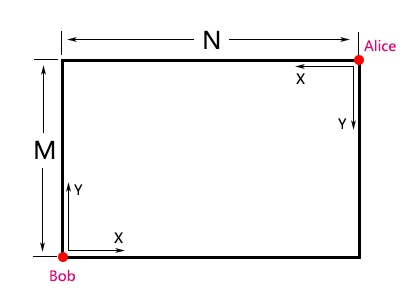标签:des style blog http color io os ar java

10 10 5 5 10 10 6 6
YES NO
/**
* Created by ckboss on 14-10-3.
*/
import java.util.*;
public class Main {
public static void main(String[] args){
Scanner in = new Scanner(System.in);
while(in.hasNext())
{
int N=in.nextInt();
int M=in.nextInt();
int x=in.nextInt();
int y=in.nextInt();
if(x==N-x&&y==M-y)
System.out.println("YES");
else
System.out.println("NO");
}
}
}3 0 1 3 3 5 4 2 3 2 4 6
301 425 -1
/**
* Created by ckboss on 14-10-3.
*/
import java.util.*;
public class Main {
static int[] num = new int[10];
static char[] ans = new char[110];
static int nt;
public static void main(String[] args){
Scanner in = new Scanner(System.in);
int n;
while(in.hasNext()){
n=in.nextInt();
int flag=0;
int MinJ=111;
Arrays.fill(num,0); nt=0;
for(int i=0;i<n;i++){
int x=in.nextInt();
num[x]++;
if(x%2==1){
if(x<MinJ) MinJ=x;
flag++;
}
}
if(flag==0)
{
System.out.println("-1");
continue;
}
num[MinJ]--;
for(int i=9;i>=0;i--){
for(int j=num[i];j>0;j--){
ans[nt++]=(char)('0'+i);
}
}
ans[nt++]=(char)(MinJ+'0');
flag=0;
for(int i=0;i<nt;i++){
if(ans[i]=='0' && flag==0){
flag=0; break;
}
flag=1;
System.out.print(ans[i]);
}
if(flag==1)
System.out.println("");
else
System.out.println("-1");
}
}
}3 abc 1 abcabc 1 abcabc 2
6 15 21
/**
* Created by ckboss on 14-10-3.
*/
import java.util.*;
public class Main {
static long[] num = new long[30];
public static void main(String[] args){
Scanner in = new Scanner(System.in);
int T_T=in.nextInt();
while(T_T-->0){
String st=in.next();
int k=in.nextInt();
Arrays.fill(num,0);
int be=0,ed=0;
long ans=0;
for(int i=0,sz=st.length();i<sz;i++){
int id=(int)(st.charAt(i)-'a');
num[id]++;
if(num[id]>k){
for(;be<=ed;be++){
ans+=ed-be+1;
num[st.charAt(be)-'a']--;
if(st.charAt(be)-'a'==id) {
be++;
break;
}
}
}
ed=i;
}
for(;be<=ed;be++){
ans+=ed-be+1;
num[st.charAt(be)-'a']--;
}
System.out.println(ans);
}
}
}1 5 7 10 11 12 13 14 Q 1 5 2 1 Q 1 5 1 0 Q 1 5 1 1 Q 1 5 3 0 Q 1 5 3 1 S 1 100 Q 1 5 3 1
5 1 1 5 0 1
分块大法好....
#include <iostream>
#include <cstdio>
#include <cstring>
#include <algorithm>
#include <cmath>
using namespace std;
const int maxn=100100;
struct BLOCK
{
int cnt[10][10];
}block[400];
int block_size,block_num;
int n,m;
int a[maxn];
const int ten[12]={1,10,100,1000,10000,100000,1000000,10000000,100000000,1000000000};
void CHANGE(int p,int v)
{
int id=p/block_size;
int x=a[p];
for(int i=0;i<10;i++)
{
block[id].cnt[i][x%10]--;
x/=10;
}
a[p]=v;
x=v;
for(int i=0;i<10;i++)
{
block[id].cnt[i][x%10]++;
x/=10;
}
}
int QUERY(int l,int r,int p,int d)
{
int L=l/block_size,R=r/block_size;
int ans=0;
if(R-L<=1)
{
for(int i=l;i<=r;i++)
{
ans+=((a[i]/ten[p-1])%10==d)?1:0;
}
return ans;
}
for(int i=l;i<(L+1)*block_size;i++)
{
ans+=((a[i]/ten[p-1])%10==d)?1:0;
}
for(int i=L+1;i<=R-1;i++)
{
ans+=block[i].cnt[p-1][d];
}
for(int i=R*block_size;i<=r;i++)
{
ans+=((a[i]/ten[p-1])%10==d)?1:0;
}
return ans;
}
int main()
{
int T_T;
scanf("%d",&T_T);
while(T_T--)
{
scanf("%d%d",&n,&m);
memset(block,0,sizeof(block));
block_size=sqrt(n*1.0)+1;
block_num=n/block_size+1;
for(int i=1;i<=n;i++)
{
scanf("%d",&a[i]);
int x=a[i];
int id=i/block_size;
for(int j=0;j<10;j++)
{
block[id].cnt[j][x%10]++;
x/=10;
}
}
while(m--)
{
char op[10];
int a,b,c,d;
scanf("%s",op);
if(op[0]=='Q')
{
scanf("%d%d%d%d",&a,&b,&c,&d);
printf("%d\n",QUERY(a,b,c,d));
}
else if(op[0]=='S')
{
scanf("%d%d",&a,&b);
CHANGE(a,b);
}
}
}
return 0;
}
BestCoder Round #11 (Div. 2) 题解
标签:des style blog http color io os ar java
原文地址:http://blog.csdn.net/ck_boss/article/details/39759589